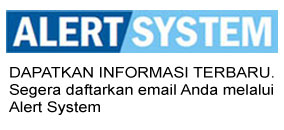Currently coronavirus outbreak that sweep city of Wuhan on December 2019 and continuously spread had become the center of attention of the world. This novel coronavirus without an official name, often referred as 2019-nCoV, had taken thousands of victims across mainland of China and dozen in some other countries as well. It is an epidemic that could possibly become pandemic if no precautions are taken.
Present situation had shown us the scale of threat an outbreak can be. Sign and symptom as well as management of patient already infected with a disease are usually already extensively studied, possibly because it affects a person directly. However, it is of an equal importance to learn about the prevention of a disease, in this case more specifically on outbreak, in order to decrease the number of people fall ill to the disease in the future.
Prevention of an outbreak or epidemic require the study that focus on the pattern of the incidence of the disease. Often, socioeconomic status of a patients determines the tendencies for acquiring the illness. Quinn and Kumar (2014) indicate how poverty could have relation with acute respiratory infection such as influenza, similar to how poverty is related to diarrheal, malaria or tubercular disease. In parallel, according to The World Bank (2019), out of a population of around 264 million in Indonesia, about 25.9 million Indonesians still live below the poverty line. Based on March 2018 data, approximately 20.19% of the entire population remains vulnerable of falling into poverty, as their income hovers marginally above the national poverty line. This socioeconomic situation in Indonesia make it even more relevant to explore the relation it has with disease epidemic.
Blumenshine et al (2008) had suggested link between social and health disparities during influenza pandemic in the United States. The literature proposed a model with three aspect that may influence such disparities: differential exposure to influenza virus; differential susceptibilities to disease; and differential access to health care once disease has developed. In 2009, Quinn et al (2011) tested the model during the H1N1 pandemic in United States, and the results demonstrate that there is significant potential for existing social disadvantages to contribute to a greater burden of morbidity and mortality from influenza, thereby exacerbating disparities. Subsequently Quinn and Kumar (2014) redesign model by Blumenshine et al (2008) and propose conceptual model that could be used to identify potential causes of inequalities in influenza burden. The model consists of two variables. The distal variables which are of social and policy variables, are the contributing factors that subsequently enable or influence the proximal variables which are behavioral and biological variables.
Differential Exposure
- Distal
- Population structure (crowding)
- Access to clean water and sanitation
- Ability to stay away from work
- Proximal
- Assortative mixing
- Hand-washing behavior
- Social distancing behavior
Differential Susceptibility and Differential disease severity
- Distal
- Psychological Stress
- Nutritional Status
- Access to health providers, insurance
- Proximal
- Inflammation and immune function
- Vaccinations behavior
- Healthcare utilization (uncontrolled chronic conditions)
Differential consequences after disease has developed
- Distal
- Quality of healthcare available to patient
- Proximal
- Treatment options offered and availed
The model could be used as a framework to test mechanisms that may lead to unequal levels of disease and death. It is only once these mechanisms and their relative impacts on disease inequalities are examined, make it possible to test the impact of counterfactual policies to reduce inequalities in disease burden (Quinn and Kumar (2014)).
For example, there are multiple causes of observed unequal levels of 2019-nCoV patients in China, with existing differential access to health providers and quality of healthcare available to patient. The level of medical care available in an area almost directly correlates with a province’s level of development, which result in the unequal distribution of medical resources across China. Such inequality also extends to the provision of medical staff in different locations (AlJazeera (2020)). In such situation, those differential variables can be assessed and improved, or alternative interventions may be devised to target those causes. (Eugeu Yasmin)
Reference
- Quinn, S.C., Kumar, S. (2014). Health Inequalities and Infectious Disease Epidemics: A Challenge for Global Health Security. Biosecurity and Bioterrorism: Biodefense Strategy, Practice, and Science. 12(5), 263-273.
- Blumenshine P, Reingold A, Egerter S, Mockenhaupt R, Braveman P, Marks J. (2008). Pandemic influenza planning in the United States from a health disparities perspective. Emerging Infectious Disease. 14(5), pp.709-715.
- Quinn SC, Kumar S, Freimuth VS, Musa D, Casteneda-Angarita N, Kidwell K. (2011). Racial disparities in exposure, susceptibility, and access to health care in the US H1N1 influenza pandemic. Am J Public Health. 101(2), pp.285-293.
- The World Bank In Indonesia (2019). Available from: https://www.worldbank.org/en/country/indonesia/overview (Accessed February 2020)
- Yuan, S., (2020). ‘Utter chaos’: Coronavirus exposes China healthcare weakness. AlJazeera. Available from: https://www.aljazeera.com/news/2020/01/chaos-coronavirus-exposes-china-healthcare-weaknesses-200129050408104.html (Accessed February 2020)








